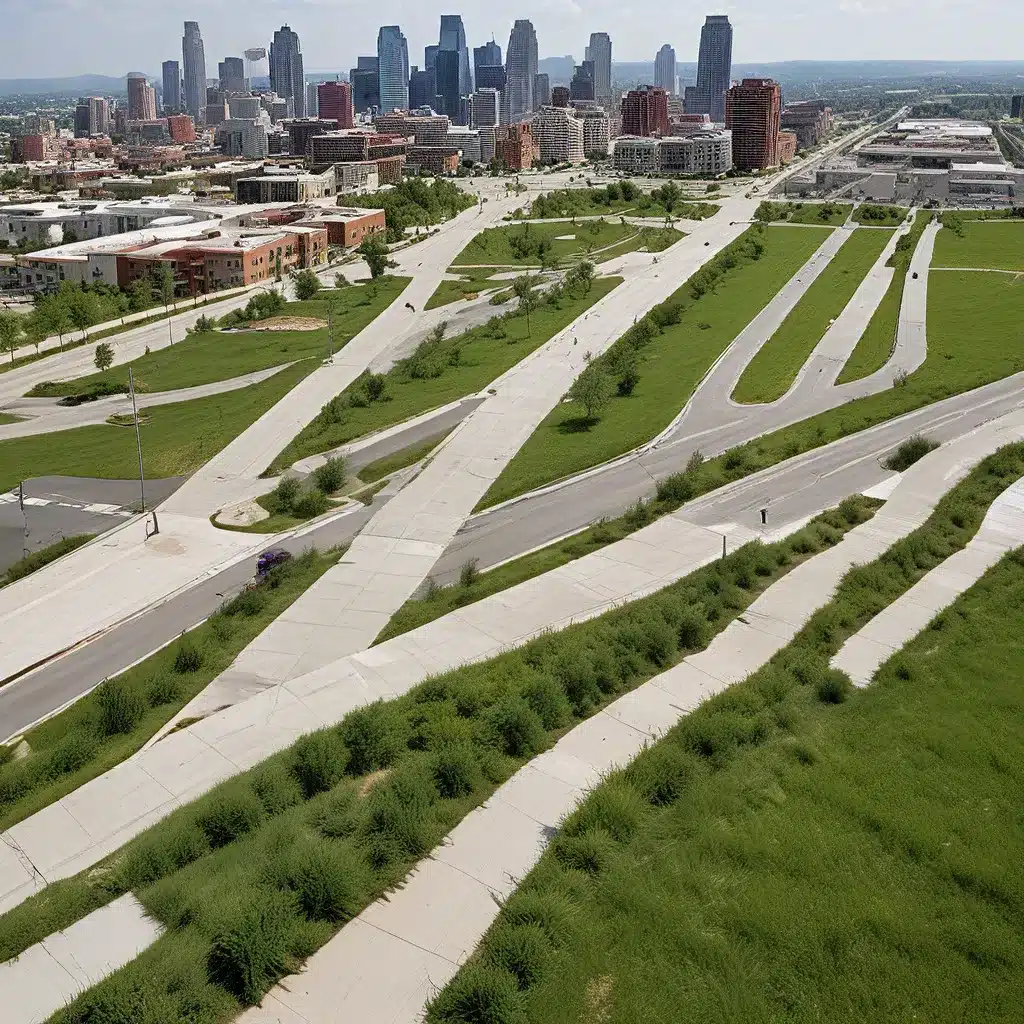
In the heart of the Midwest, Kansas City is a dynamic metropolis where concrete plays a vital role in shaping the city’s infrastructure. As a leading hub for commerce, transportation, and residential living, the city faces the unique challenge of balancing the practical needs of its concrete-based systems with the growing demand for more sustainable and environmentally-friendly solutions.
Embracing Green Infrastructure: The Benefits for Kansas City
The concept of green infrastructure has gained significant traction in recent years, offering a holistic approach to managing water resources and mitigating the effects of the heat island effect. Unlike traditional concrete-centric infrastructure, green infrastructure incorporates natural elements, such as trees, wetlands, and permeable pavements, to work in harmony with the built environment.
One of the primary advantages of green infrastructure is its ability to reduce stormwater runoff and alleviate the strain on Kansas City’s combined sewer system. By allowing water to infiltrate the ground naturally, green infrastructure can minimize the risk of flooding and reduce the frequency of combined sewer overflows, which can compromise water quality and pose public health risks.
Furthermore, the integration of green elements into the urban landscape can have a significant impact on temperature regulation. Studies have shown that green roofs can reduce surface temperatures by 30-40°F and ambient temperatures by up to 5°F, effectively mitigating the heat island effect that is often associated with dense, concrete-dominated cities like Kansas City.
Diverse Green Infrastructure Strategies for Kansas City
As Kansas City continues to embrace the principles of sustainable development, a range of green infrastructure strategies are being implemented to improve the city’s environmental resilience and enhance the quality of life for its residents.
Rain Gardens and Bioswales: These naturalized depressions in the landscape are designed to capture and filter stormwater runoff, reducing the burden on the sewer system and improving water quality. By incorporating native plant species, rain gardens and bioswales also provide valuable habitat for local wildlife and contribute to the overall aesthetic appeal of the urban landscape.
Permeable Pavement: In lieu of traditional impervious surfaces, the use of permeable pavement, such as porous concrete or permeable pavers, allows water to infiltrate the ground, reducing the risk of pooling and standing water. This approach not only mitigates flooding but also helps to recharge groundwater supplies and reduce the strain on stormwater management infrastructure.
Green Roofs: The installation of vegetated rooftops, or green roofs, is another effective strategy for Kansas City. These roofs not only help to reduce the heat island effect but also provide insulation benefits, reducing the energy required for heating and cooling buildings. Furthermore, green roofs can absorb and filter stormwater, reducing the burden on the city’s drainage systems.
Collaborative Efforts and Community Engagement
Implementing green infrastructure in Kansas City requires a collaborative effort between local government, private developers, and the community. The KC Smart Sewer program, for example, is a comprehensive initiative that aims to integrate green infrastructure into the city’s stormwater management strategy, leveraging funding and incentives to encourage its adoption.
Beyond government-led initiatives, community engagement plays a crucial role in the success of green infrastructure projects. By educating residents on the benefits of sustainable concrete solutions and involving them in the planning and implementation process, Kansas City can foster a sense of ownership and stewardship over these vital infrastructure improvements.
Measuring the Impact of Green Infrastructure
Quantifying the benefits of green infrastructure is essential for justifying investments and demonstrating the value of these sustainable approaches. Studies have shown that green infrastructure investments can provide significant returns, including reduced energy costs, improved air quality, and increased property values.
For example, the EPA-published case study on green roofs in Kansas City found that the city’s existing green roof coverage of over 700,000 square feet would result in the avoidance of 384 pounds of nitrogen oxide, 734 pounds of sulfur dioxide, and 269 tons of carbon dioxide emissions in 2020 alone. These reductions translate to monetized health benefits of $355,080-$500,000.
By quantifying the environmental, economic, and social benefits of green infrastructure, Kansas City can make a compelling case for further investment and encourage the widespread adoption of these sustainable concrete solutions.
The Future of Concrete: Balancing Tradition and Innovation
As Kansas City continues to evolve, the city’s infrastructure must adapt to meet the demands of the 21st century. While traditional concrete-based systems will continue to play a vital role, the integration of green infrastructure offers a promising pathway towards a more sustainable, resilient, and livable urban environment.
By embracing the principles of green infrastructure, Kansas City can protect its natural resources, enhance community safety and well-being, and position itself as a leader in the concrete contracting industry. Through collaborative efforts, community engagement, and a commitment to measurable results, the city can transform its concrete landscape into a model of environmental stewardship and innovation.
For homeowners and business owners in Kansas City, the choice to partner with a concrete contractor who understands the value of green infrastructure can be a crucial step towards a more sustainable future. By incorporating green elements into their projects, whether it’s permeable driveways, green roofs, or natural stormwater management solutions, they can contribute to the city’s larger vision of a greener, more livable urban landscape.

